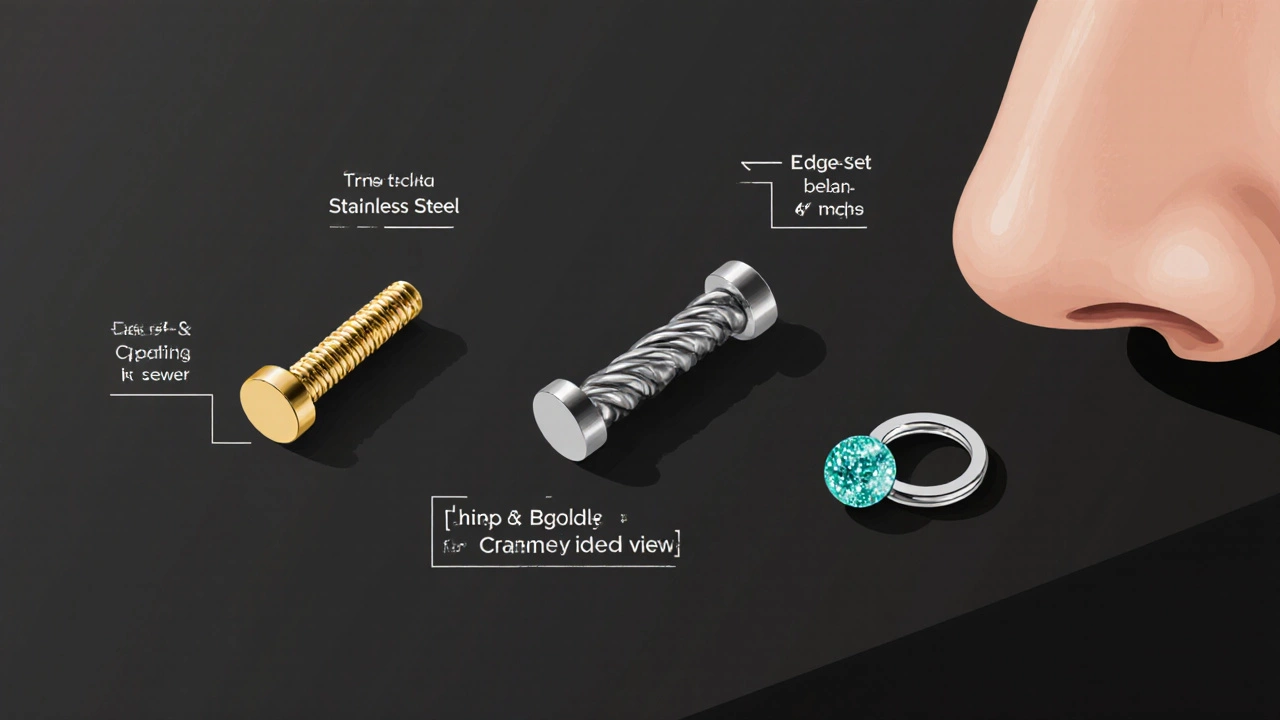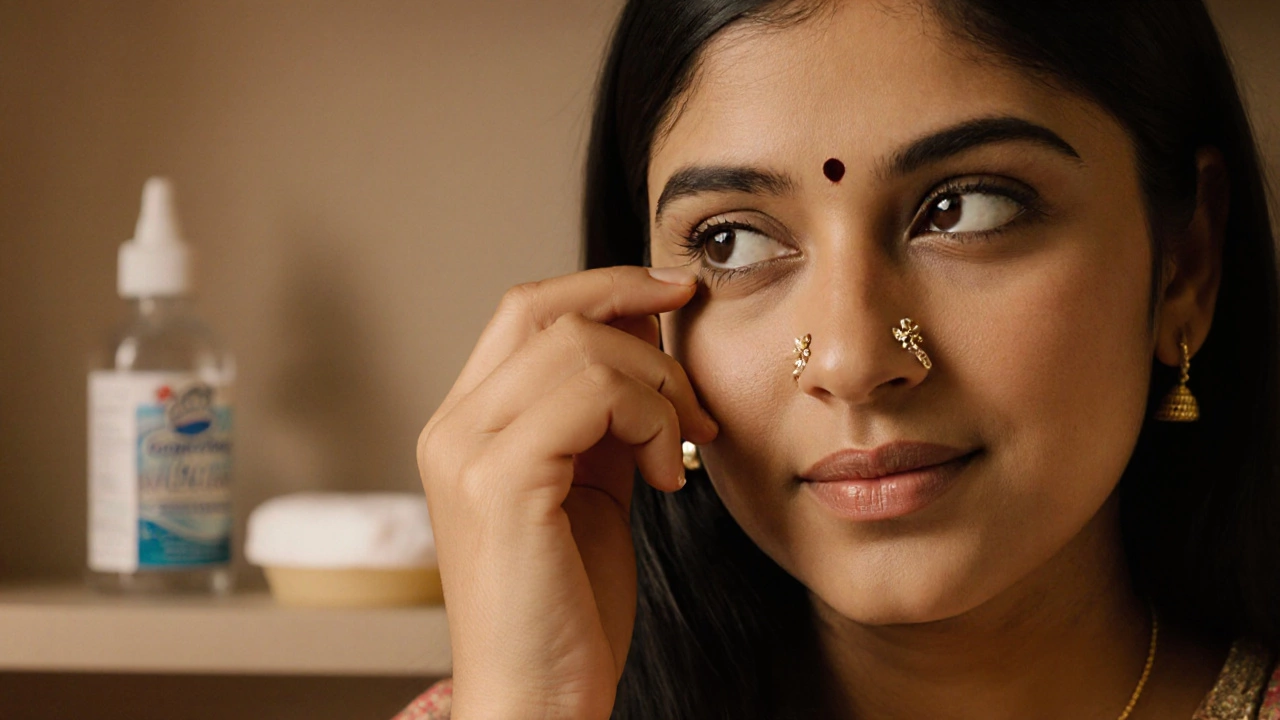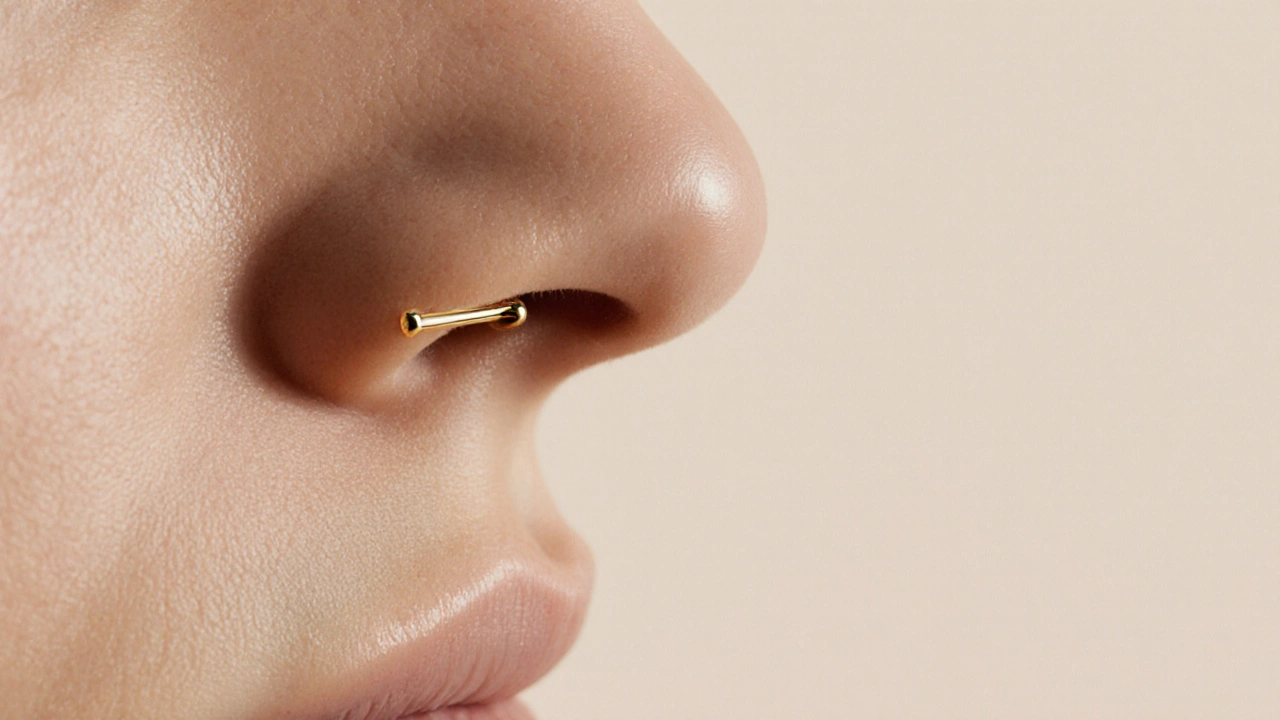Nose Piercing Side Selector
This tool helps you determine which side (left or right) might be most suitable for your straight nose piercing based on your facial symmetry, dominant hand, and personal preferences.
Your Recommendation
When you ask “What side means straight for nose piercing?”, you’re really trying to figure out how the jewelry should sit on the side of the nostril. Straight nose piercing is a style where the bar or post aligns parallel to the outer edge of the nostril, giving a clean, linear look.
Understanding Nose Anatomy and Piercing Sides
The human nose has two main entry points for body jewelry: the nostril and the septum. Most people get a nostril piercing because it’s easy to access and heals relatively quickly. The nostril itself is a small opening at the side of the nose, and it can be pierced on the left, right, or both sides. When we talk about a “straight” placement, we refer to the side of the nostril where the post runs straight out, rather than curving inward like a hoop.
Knowing which side you’re targeting matters for three reasons:
- Facial symmetry: A straight bar on the right side will look slightly different from a left‑side bar due to the natural tilt of the face.
- Comfort: The skin on one side may be tighter or looser, affecting how the jewelry sits during daily activities.
- Style preference: Some cultures associate the left side with specific meanings, while fashion trends often favor one side over the other.
What "Straight" Actually Means
In plain terms, a straight nose piercing means the jewelry’s post is oriented so that it points directly outward, parallel to the surface of the nose. It does not bend or curve back toward the inner wall of the nostril. This orientation is most common with three types of jewelry:
- Nose stud - a simple straight bar with a decorative end.
- Nose screw - a twisted bar that still stays straight on the outer side.
- Captive bead ring (when the bead sits at the very edge, the ring looks straight from the outside).
The key is that the visible part of the jewelry does not form a loop or curve; it sits flat against the side of the nostril.
Popular Straight‑Side Jewelry Options
| Jewelry Type | Typical Material | Visual Effect | Healing Time | Best For |
|---|---|---|---|---|
| Nose stud | 14k gold, surgical steel, titanium | Minimalist, straight line | 4‑6 weeks | First‑time piercings, work‑place friendly |
| Nose screw | Stainless steel, gold‑filled | Twisted look, still straight on side | 6‑8 weeks | People who want a bit of texture without a hoop |
| Captive bead ring (edge‑set) | Gold, biocompatible acrylic | Ring appears as a tiny bead, line‑like | 8‑10 weeks | Those who like a subtle sparkle |
All three options keep the outer profile straight, but they differ in feel, visual impact, and how long they stay in the fresh stage.

Choosing the Right Side for Your Straight Piercing
There’s no universal rule that says the left side is always better than the right. Instead, consider these practical factors:
- Dominant hand: If you’re right‑handed, you might find a right‑side stud easier to touch without contaminating it.
- Facial asymmetry: Some people have one nostril slightly bigger. Choose the side with a smoother entry point to reduce pressure.
- Cultural meaning: In parts of India, a left‑side nose pin is traditionally linked to marriage, while a right‑side pin can be a fashion statement. Knowing the cultural backdrop helps you pick the side that fits your story.
- Outfit coordination: If you often wear earrings on one ear, matching the nose side can create a balanced look.
Talk to a professional Jeweler or piercer. They can assess your anatomy and suggest the most comfortable side for a straight placement.
Healing Considerations for Straight Nose Piercings
Healing a straight nose piercing follows the same rules as any other nostril piercing, but the straight orientation adds a couple of nuances:
- Minimal movement: Because the post doesn’t curve, it tends to move less when you touch it. Less movement equals quicker healing.
- Cleaning access: The flat side makes it easier to apply saline solution without the risk of spreading the solution inside a curved loop.
- Clothing interference: A straight stud is less likely to snag on scarves or masks, which is crucial if you wear a mask daily.
Typical Healing time for a straight nose stud is about 4‑6 weeks, while a screw may need up to 8 weeks because of the extra surface area.
Aftercare Tips Specific to Straight‑Side Piercings
Good aftercare is the difference between a smooth recovery and a lingering irritation. Follow these steps:
- Salt water soak: Mix 1/4 teaspoon of sea salt in 8 oz of warm water. Soak the piercing for 3‑5 minutes twice a day.
- Avoid touching: Even though the jewelry is straight, it’s still a fresh wound. Wash hands before any contact.
- Keep it dry: Pat the area gently with a clean paper towel after washing your face; don’t rub.
- No alcohol or peroxide: These can dry out the tissue and delay healing.
- Monitor for redness or swelling: Mild redness is normal, but if swelling spreads or pus appears, call your piercer.
Remember, the straight nose piercing style reduces the chance of snagging, but you still need to treat it like any new piercing.

Common Mistakes to Avoid
Even seasoned piercers see beginners make the same errors. Here are the top three:
- Choosing the wrong side: Picking a side that feels tight can cause the jewelry to press against the inner wall, leading to irritation.
- Using heavy jewelry too early: Heavy gauge or large beads stress the fresh tissue. Stick to lightweight studs (12‑14 gauge) until fully healed.
- Skipping professional piercing: Attempting a DIY straight side piercing often results in an off‑center hole, which looks odd and heals poorly.
Whether you’re getting your first nose pin or adding a second one, a professional piercer will use a sterile hollow needle, measure the exact insertion point, and ensure the post sits perfectly straight.
Quick Checklist Before You Book
- Decide which side (left or right) feels comfortable based on facial symmetry.
- Choose a straight‑side jewelry type: stud, screw, or edge‑set captive bead ring.
- Confirm the material (titanium or 14k gold are best for sensitive skin).
- Schedule a consultation with a licensed piercer.
- Prepare aftercare supplies: saline solution, clean cotton pads, and mild soap.
Frequently Asked Questions
Is a straight nose piercing the same as a hoop?
No. A straight piercing uses a bar‑shaped post that sits parallel to the nostril edge, while a hoop curves around the opening.
Can I switch from a straight stud to a hoop later?
Yes, once the piercing is fully healed (typically after 8‑10 weeks) you can change the jewelry. A professional piercer will ensure the new hoop fits without stretching the hole.
Does the side I choose affect how long it heals?
The side itself doesn’t change the biology of healing, but a tighter side can cause more friction, which may slow down the process.
Are there cultural meanings attached to the left or right side?
In many Indian traditions, a left‑side nose pin is linked to marriage, while a right‑side pin can signal fashion or personal independence. Modern fashion often ignores these rules, but it’s good to know the background.
What aftercare products are safe for a straight nose piercing?
Plain saline solution, mild fragrance‑free soap, and a clean cotton swab are all safe. Avoid ointments with petroleum or alcohol.
Choosing the right side and the right straight‑side jewelry can turn a simple nose pin into a stylish, comfortable statement. By following the guidelines above, you’ll enjoy a smooth healing journey and a look that stays crisp for years to come.



